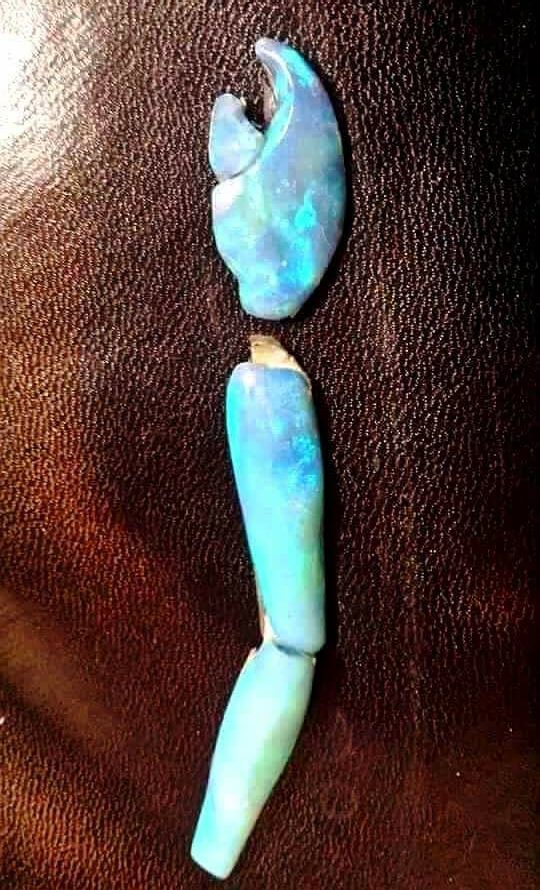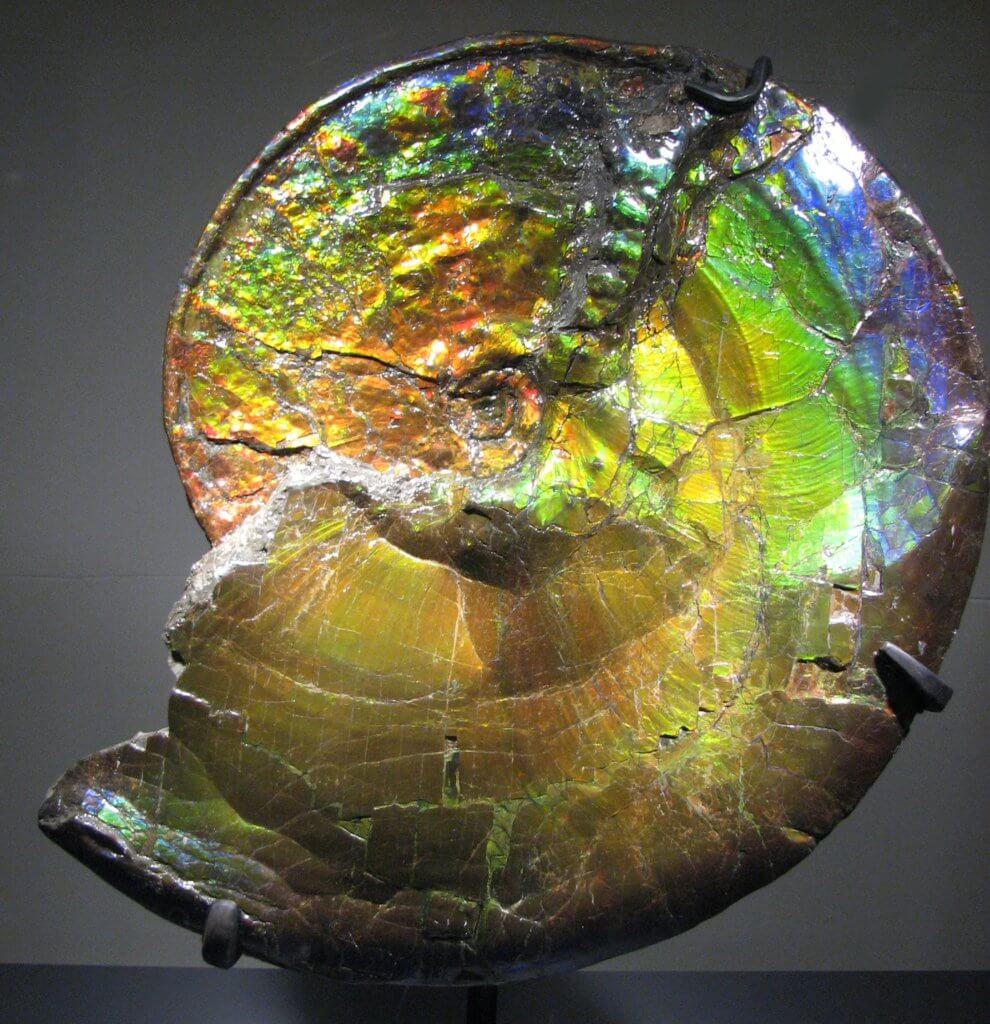Stumbling around the internet this week, I ran across this fossil that I found to be absolutely incredible. It’s a crab claw from long ago which has completely turned into opal!
Now, from what I’ve learned, opalized fossils are not all that rare. However, an opalized crab claw that’s completely intact is quite rare, which makes this find even that more interesting.
The Opalized Crab Claw

According to GeologyIn.com, Opal generally known to form inside cavities within rocks. But if a cavity has formed as a result of a bone, shell or pine cone being buried in the sand or clay that later solidified and became rock, and the conditions were right for opal formation, then the opal forms inside that cavity instead. The result is a fossil replica of the original object that was buried.
More common types of opal fossils you would see are from partial structures such as bone, seashell or wood (petrified wood).

How Do Opalized Fossils Form?
In simple terms, opalized fossils form when organic material decomposes, leaving a void that gets filled with silica gel. Over millions of years, this gel transforms into opal, preserving the shape and sometimes even the intricate details of the original organic material.
Opal’s Structure: Opal is a mineraloid, meaning it lacks a crystalline structure. It’s mainly composed of silica, similar to agates, chalcedonies, and quartz crystals. However, the difference lies in its microscopic structure. Opal consists of tiny spheres stacked together. In some cases, light passing between these spheres creates the play-of-color that precious opal is known for. Most opalized fossils are made of common opal, with precious opal replacements being extremely rare.
Formation Process: Opal forms differently from other silica stones. While quartz and chalcedony form under heat, opal seems to form under relatively cooler conditions. The mechanism is believed to be water precipitation. As water seeps into the ground, it becomes saturated with silica. This water, which is closer to a gel due to its supersaturation with silica, trickles into voids and spaces in the bedrock. Over time, the water evaporates, leaving behind the silica spheres that form opal.
Opal Replacement in Fossils: The majority of fossils we see result from a process called replacement. When an organic material gets buried over time, it decomposes, leaving a void. This void is then filled with other minerals. Chalcedony and opal are two common minerals seen in these replacements. For opalized fossils to form, the organic material decomposes, leaving a shaped void that’s filled with silica gel. Over millions of years, this silica gel slowly turns into opal.
- 7 Of The Largest Gold Nuggets Ever Found…Ever! - December 21, 2023
- Find Gold On Your Property? Here’s Why You Should Think Twice Before Spreading the News - December 21, 2023
- The Opalized Crab Claw (And How It Formed) - September 14, 2023
- Online rock and mineral club for collectors of all levels!
- Find community with like-minded rock and mineral enthusiasts.
- Monthly Giveaways!
- Free Access to Entire Digital Library of Products (current and future products)*


